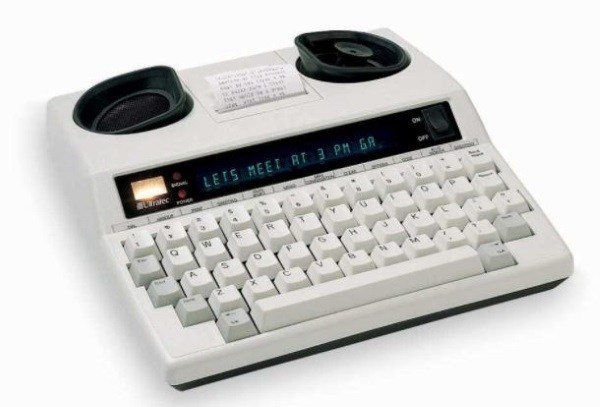Have you hear about TTY mode and wondered what it was? Did you see something mentioned and want to know if you could get in on the action, or if doing so would even benefit you? If so, ‘What is TTY mode and do I need to use it?’ is for you.
A TTY (teletypewriter) is a device that helps people who are deaf, speechless, or hard-of-hearing use a phone to communicate. While TTY devices were initially designed for landline phones. People use them today with both landlines and cell phones. TTY mode is a feature of mobile phones that stands for either ‘teletypewriter’ or ‘text telephone.’ A teletypewriter is a device designed for the hearing impaired or those who have difficulty speaking. It translates audio signals into words and displays them for the person to see. The device can then re-encode written replies into audio for the other party to be able to hear. In this article, I’ll be talking about TTY mode meaning on a cell phone and how to use it, as well as offering other, more modern options for people with hearing or speech impairments to communicate.
However, TTY refers to all types of teletypewriters. TTY mode refers only to mobile phones. A TTY, or teletypewriter, is a device used to help deaf people communicate. Many mobile phones today have the ability to connect to TTY devices. They allow hearing-impaired people to converse with others using a TTY device. When enabling or disabling TTY mode on your phone. Certain elements of your phone become unusable.

Contents
What is TeleTypeWriter?
Originally, People use teletypewriters in newsrooms before the age of cellphones and the internet. They would sit in a row chattering away as they printed and produced quite a lot of noise. We cannot send messages from one end of the country to the other using the existing telephone network. Like the internet, email, and mobile phones took over, teletypewriters took a back seat. Now, People use them almost exclusively for hearing or speech impaired.
A teletypewriter (TTY) is an input device. It allows alphanumeric characters. So that they can type and send. Usually one at a time in a computer or a printer. Teletypewriter is a very old technology. But now people use them for new media to continue providing access to the hearing impaired or the speech impaired.
How Does TTY Work?
A TTY device is like a typewriter that contains a small display screen. It may or may not print out the message depending on the model you‘re using. The device connects to a compatible cellphone using a TTY cable and will essentially act as an SMS device. Also, and you can communicate with someone else who has a TTY device.
TTY mode is legacy technology and many hearing or speech that people can utilize SMS to communicate. There are also real-time IP technologies to make communication easier, but these require either a data plan or a digital telephone line. TTY mode made for those who have no access to mobile data or have some restrictions on analog phone lines. Accessibility marches onwards, but it’s still not quite ubiquitous.
You type your message on the teletypewriter and check it on the screen. When you submit it, it passes to the phone over the TTY cable and sends it via your carrier. The receiving end will receive the message and either read it directly on the phone or via its own teletypewriter.

How to use TTY Mode?
If you have a compatible handset, using TTY mode is simple. You will need a teletypewriter, a TTY cable, and your phone, of course. Usually, the TTY cable will connect to the audio jack. You then need to turn on TTY mode and go from there.
The variants of TTY are Full, HCO and VCO. Full TTY means that there is text-only communication on both sides of the phone call. HCO stands for “Hearing Carry-Over” which means that you hear a voice read the incoming text and you type the outgoing text. VCO stands for “Voice Carry-Over” which means that you speak the outgoing text and receive a text message back as your incoming communication. HCO settings are typically amplified for the hard of hearing. Use caution with headsets and hands-free earpieces when enabling HCO because of this increased volume.
When you enable TTY mode, other phone functions may not work properly. Depending on the phone, you may not be able to use SMS or normal voice calls with it enabled. So if you don’t use a teletypewriter, it makes sense to keep the setting switched off in order to have access to your phone’s full functionality.
The Four settings:
There are usually four settings to choose from, TTY Off, TTY Full, TTY HCO and TTY VCO.
- OFF: is fairly straight forward, as it means TTY Mode is not enabled at all.
- FULL:
- It is for text-only communications both ways with no audio component.TTY VCO is useful if both parties have either speed or hearing impairments. It will send and receive purely in text via the teletypewriter at each end.
- TTY HCO:
- is for Hearing Carry Over which means your messages are sent via text but received as audio. Used primarily for speech impaired. Think of text-to-speech programs and you’ll understand the gist of this setting. TTY HCO is useful if the caller has speech impairments but the called party does not. The teletypewriter will send the message via text while replies will be audio.
- TTY VCO:
- is for Voice Carry-Over, which means you talk and the teletypewriter at the other end turns it into text. Messages are received in text, and this setting is used primarily for hearing impaired. Think of speech-to-text programs and you’ll understand the gist of this setting. TTY VCO is best used when the caller is hearing impaired but has no issues with speech. The caller sends the message over audio and receives replies as text.
FurtherMore:
If you want to communicate with someone who is hearing impaired but does not have a TTY compatible phone, you can use the Telecommunications Relay Service in the US. This is a 24-hour service available to anyone by calling 711. A trained operator will type your spoken message on their teletypewriter and send it on your behalf. They will then translate the reply into speech. It sounds a little 18th century but it works very well, and if it’s the only option available to you then it’s indispensable.
That is everything you need to know about the TTY mode. If you need extra accessibility options or if you’re regularly in touch with someone who needs help, it is an important feature of your next smartphone. If you don’t need the extra help or don’t regularly communicate with someone who does need help, you will not need TTY mode.
Can you communicate with a hearing-impaired Person If you don’t have TTY?
es, you can! If you do not have a TTY machine, you can make the call to a hearing-impaired person through Telecommunications Relay Service (TRS). In many countries, TRS is available as a toll-free and round the clock service. To use TRS, you need to call the TRS number and ask the TRS operator to connect you to the hearing-impaired receiver. Then whatever you will speak, the TRS operator will type that on a TTY machine and the text will transmit to the call receiver (who will see the text on her TTY text display).
In the United States, 711 is the Telecommunications Relay Service number. Emergency TTY calls are made directly to the regular 911 number.
We hope now you got answers to all your questions regards to TTY mode. If you have any further questions, please feel free to post them here.






